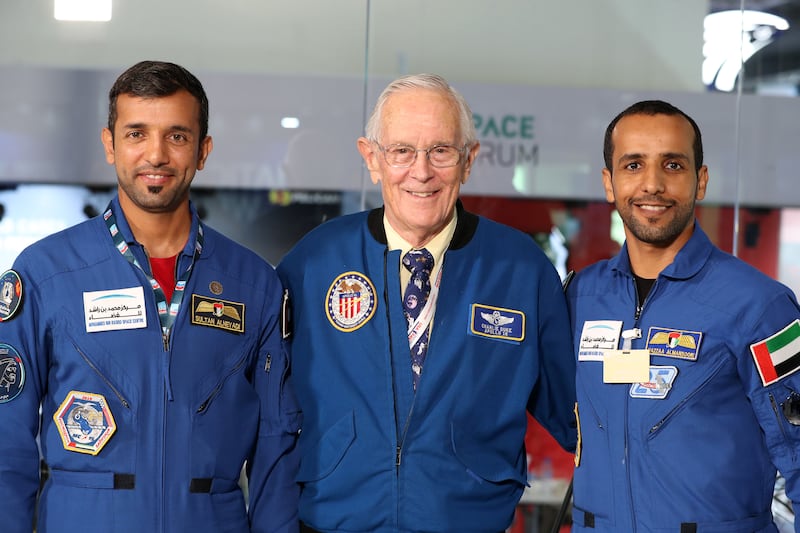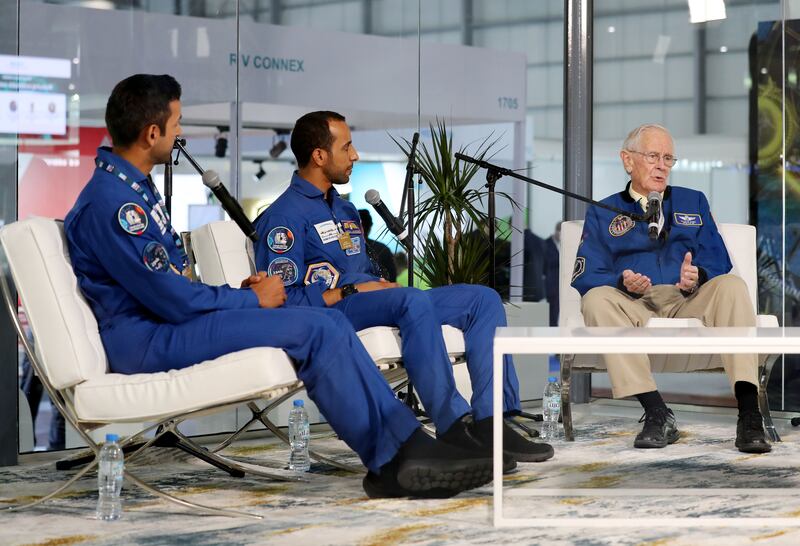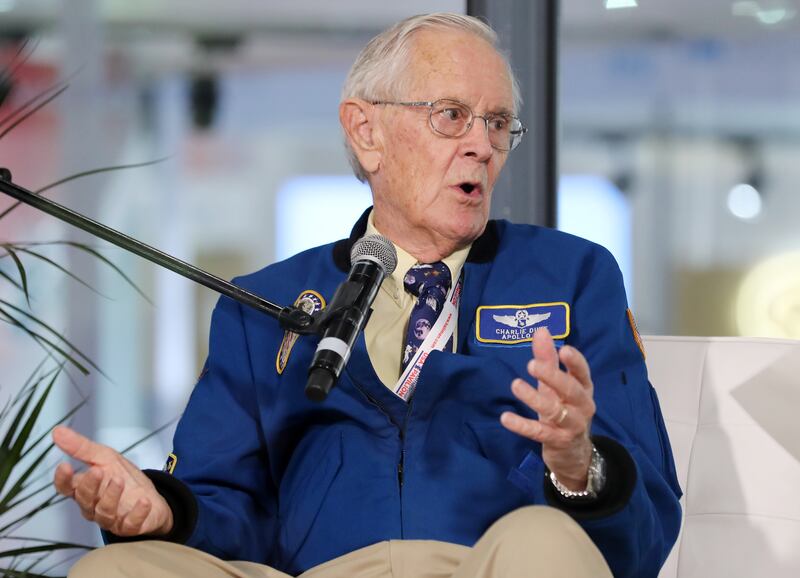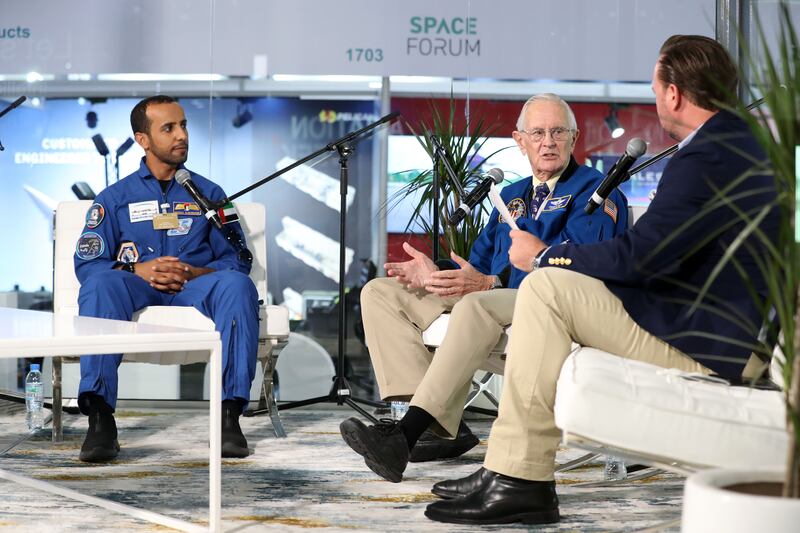The youngest man to walk on the Moon said that the lunar surface is ideal to build a science station.
Charles Duke, 86, who walked on the Moon at age 36 during the Apollo 16 mission in 1972, was speaking at the Dubai Airshow on Monday, alongside UAE astronauts Hazza Al Mansouri and Sultan Al Neyadi.
Mr Duke believes only private companies will travel to Earth’s orbit in the future, with government agencies likely to focus on the Moon and Mars.
Several private companies, such as Blue Origin and Nanoracks, have announced plans to build a commercial station in orbit, while space agencies from the US, China and Russia look to plans for a base on the Moon.
Nasa’s focus is on its Artemis programme, which involves sending humans back to the lunar surface and building a station in Moon’s orbit to be used in future Mars missions.
“I think Nasa is going to turn over Earth orbit to the private companies because of the amount of money it’s going to take to get to the Moon again with Artemis. It’s going be a strained budget, in my opinion,” Mr Duke said.
“Commercial tourism is going to multiply as they get more and more vehicles and the price will come down. These guys are in business to make money and I think they know how to do that.
“I see Nasa focusing on Artemis and deep space. The Moon is a great place for a science station. You have no atmosphere, there’s no pollution and it’s just a beautiful sky up there.”
The first human lunar landing since the Apollo era was recently delayed by a year to 2025. Nasa plans to send the next man and first woman to the lunar surface.
Emotional moment
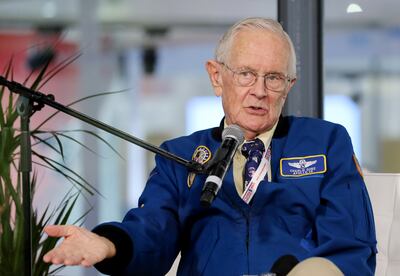
Mr Duke described what it was like to look back at Earth from the Moon’s surface.
“To me, one of the most moving moments was right after we left Earth orbit,” he said.
“Our orbit was on the way to the Moon, but we were going south across the equator. When we turned our spacecraft around to retrieve the lunar module, I looked out the window on the right and into my window floated the Earth and it was about 30,000 kilometres away.
“You could see the whole circle of the Earth and it was just suspended up there in a blackness of space – it was an emotional moment for me.
“We could see the Arctic Circle down across Canada, the US and Mexico and Central America was the land mass. When I look back at the pictures, they really capture the emotions.”
UAE astronauts could land on the Moon one day, with the authorities in discussions with Nasa regarding the Artemis programme.
Dr Al Neyadi told the panel that going to the Moon was his “ultimate goal”.
“We hear a lot of ambitious plans to go back to the Moon through the Artemis programme – I definitely would like to be part of that,” he said.
“Going to the Moon and following in the footsteps of great heroes and legends, I think that is the ultimate goal, personally, and for my colleagues as well.”
